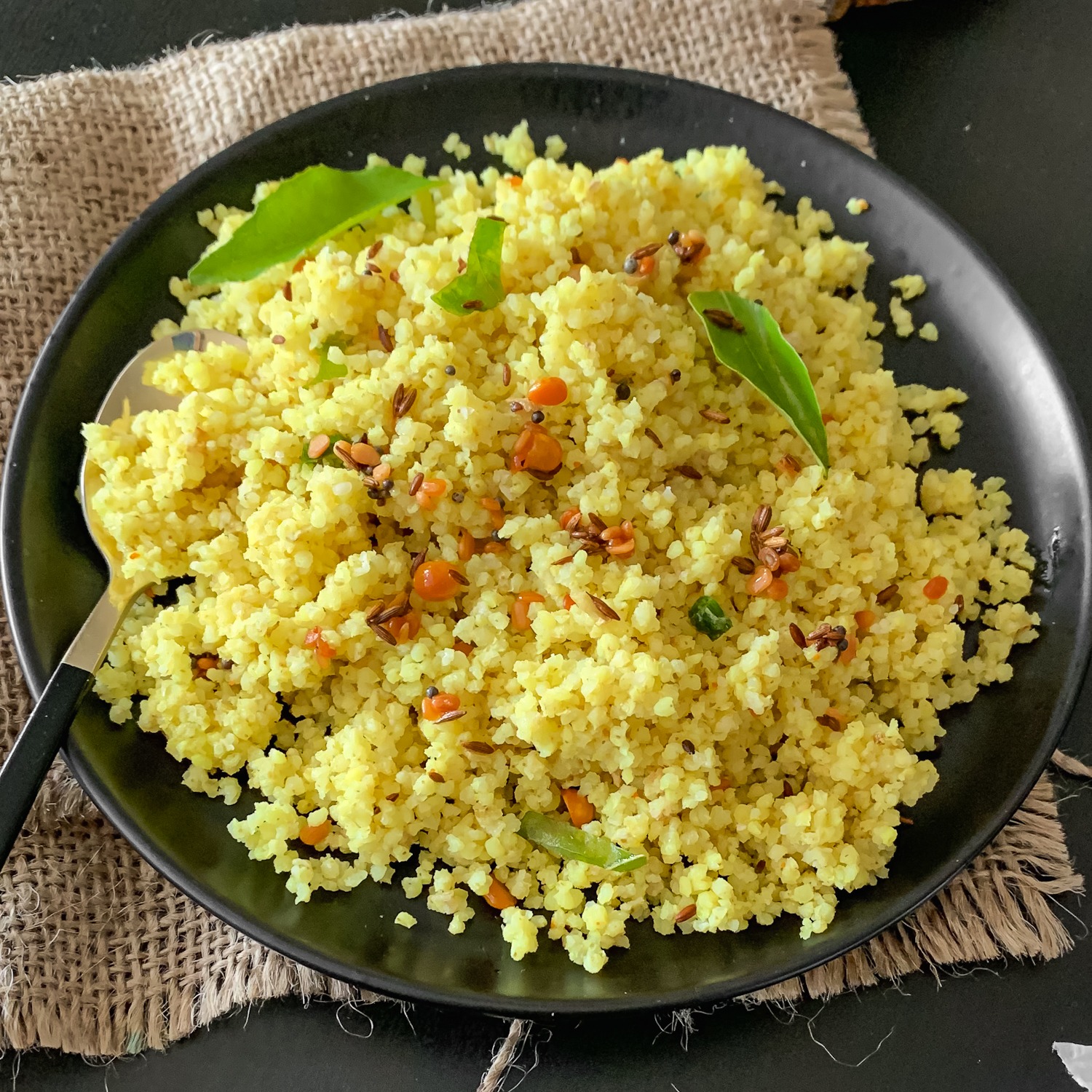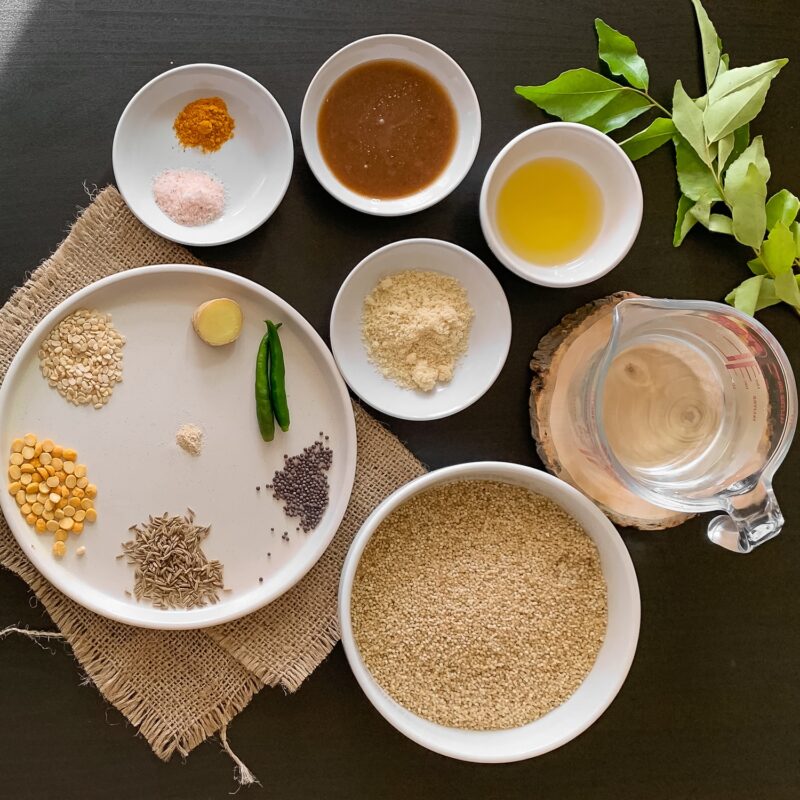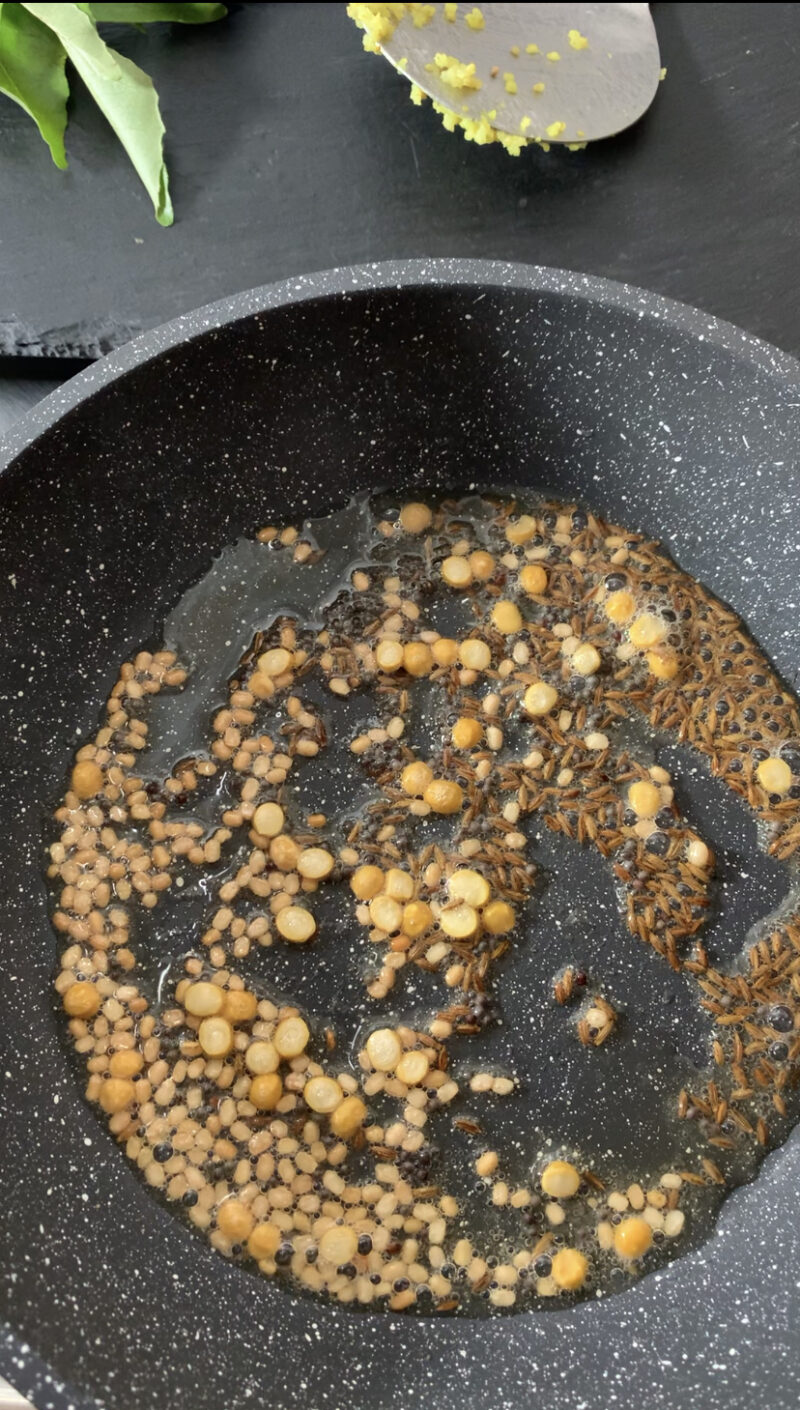
For cooking the millet:
| Barnyard millet | 1 cup |
|---|---|
| Water | 2 cups |
| Salt | 1 teaspoon |
| Sesame oil | ½ tablespoon |
To add to the cooked millet:
| Tamarind pulp | 2 tablespoons |
|---|---|
| Sesame oil | 1½ tablespoons |
| Turmeric powder | ¼ teaspoon |
| Curry leaves | 4-5 |
| White sesame seeds | 1-2 tablespoons |
| Salt | to taste |
For the tempering:
| Sesame oil | 2 tablespoons |
|---|---|
| Chana dal (split chickpeas) | 1 teaspoon |
| Urad dal (split black gram) | 1 teaspoon |
| Cumin seeds | ½ teaspoon |
| Hing (asafoetida) | 2 pinches |
| Mustard seeds | ¼ teaspoon |
| Ginger, finely chopped | a ½-inch piece |
| Green chillies, finely chopped | 2 |
| Curry leaves | 3-4 |
What You Will Need
A saucepan or kadhai with a lid, a big bowl, a mixing spoon, a skillet, measuring cups and spoons, fine mesh strainer, a turner, a cheesecloth or kitchen towel, a mortar and pestle or mixer grinder, a fork.

Instructions
Wash the millet grains until the water runs clear. Soak them for 6 hours. Strain and shade or sun-dry the grains on a cheesecloth or kitchen towel. This might take 1 to 3 days, depending on the humidity of the location. Once completely dried, you can store the grains in an air-tight container for future use.
Soak the tamarind in warm water for 30 minutes. Mix the pulp with the water, strain, then keep the pulp aside and discard the seeds.
While the pulp is still soaking, dry roast 2 to 3 tablespoons of white sesame seeds in a flat skillet over low to medium heat. Stir continuously to ensure even roasting. The seeds are ready when they begin to pop, and turn a light golden brown—this should take around 2 to 3 minutes.
Take the pan off the heat and let the seeds cool completely. Once cooled, grind them into a coarse powder using a mixer grinder or a mortar and pestle. Set aside for later use.
To cook the grains, bring 2 cups of water to a boil in a kadhai / saucepan. Add the salt and oil. When the water comes to a rolling boil, add the soaked-and-dried grains and mix.
Cover the saucepan, turn the heat down to medium-low, and cook for 10 minutes or until the water has been absorbed and the grains are cooked.
Take the lid off and gently fluff the millet up with a fork. Cover and set aside to rest for 10 minutes.
Meanwhile, make the tempering. Heat 2 tablespoons of oil in a skillet. When the oil is hot, add the chana and urad dals. Then add cumin seeds, hing, and mustard seeds.

Stir well, and when the mustard seeds start to splutter, add the chopped ginger, chillies, and curry leaves (tear each leaf in 2 to 3 pieces). Take off the heat and set aside.
Take the lid off the saucepan and while the grains are still warm, add 1½ tablespoons of sesame oil, the tamarind pulp, salt, turmeric powder, curry leaves, and roasted sesame powder.
Tip the tempered oil and spices over the grains and mix well. Check for salt and adjust, if needed.
The pulihora is ready to serve. If you have time, let it rest at least 30 minutes to an hour before serving.
Tips:
- Wash the barnyard millet 2-3 times or until the water runs clear. Soak them in water for 5-6 hours. Drain well and shade or sun-dry until the grains are completely dry. Store them in an airtight container and use as required.
- Traditionally, tamarind is used in this recipe, but you can use lemon juice instead. Start with a little, and add more according to your taste and preference.
Variations:
- You can replace barnyard millet with millets like sorghum, little, foxtail, kodo, browntop or proso, however, cooking time for each millet will differ slightly.
- Traditionally, this recipe calls for sesame oil. You can, however, use groundnut oil or any neutral oil.
Padma Kumar is an early-years education entrepreneur and blogs at MyGoodFoodWorld. She divides her time between Manchester and Chennai.
You must be logged in to rate this recipe.

Sign in with email
